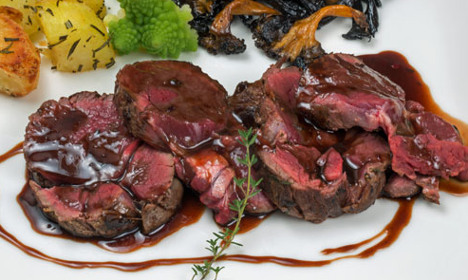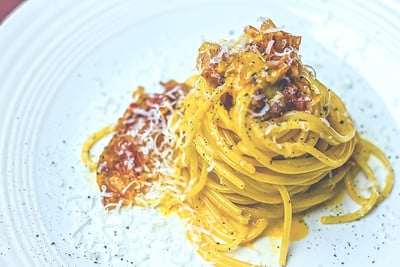The combination of flavours in this dish is stunning and it makes a wonderful treat for a special occasion.
Summary
Serves two
Preparation: 5 minutes
Cooking: 30 minutes
Total: 35 minutes (plus 30 minutes to marinate)
Ingredients
250g fillet of venison
1 small bunch of thyme
1 tbsp virgin olive oil
salt and freshly ground black pepper
1-2 tbsp red wine
1-2 tbsp liquorice syrup
1/2 tbsp butter
1 tbsp red currant jelly or rowan jelly
1/2-1 tsp apple cider vinegar (optional)
Method
1. Put the venison, thyme, oil, salt and pepper in a plastic bag and mix the ingredients carefully. Leave to marinate for 30 minutes.
2. Heat a frying pan until really hot, then add the venison, turning regularly until browned but still raw in the centre (5-8 minutes).
3. Wrap the venison in foil and wait 20 minutes before carving. After carving, cover the meat with foil and keep warm.
4. Return the juices from the meat to the pan and add a tablespoon of red wine and a tablespoon of liquorice syrup. Heat through and stir until thorougly mixed.
5. Add the red currant jelly and butter and stir until the sauce thickens a little.
6. Have a taste and add more red wine or more liquorice syrup if desired. If it is too sweet add half a teaspoon of apple cider vinegar.
7. Pour the sauce over the carved meat and serve.
Tips
– If you can't find any liquorice syrup you can make your own easily by melting 25 g (1 oz) of pure liquorice with a tablespoon of water.
Recipe courtesy of John Duxbury, editor and founder of Swedish Food.
Do you enjoy trying out our recipes? Here's how to make sure you never miss your favourite features on The Local.




 Please whitelist us to continue reading.
Please whitelist us to continue reading.
Member comments